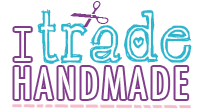Photo from Victoriana.com
The earliest ornaments for sale in stores were flat lead stars, crosses, butterflies and diamonds. They were popular in the U. S. between 1870 and 1890. The first blown-glass ornaments were sold in America. They were not the thin bubbles we see today, but very thick.
Other early ornaments included flying angels and animals made of wax. Angels had cardboard wings and their clothes were made from tinsel and ribbon.
In 1875, Celluloid ornaments were popular, even though they were a fire hazard. These included soldier, doll and birdhouse ornaments.

Celluloid Santa Clause. 10” high. Stamped on carton base “Japan”.
Celluloid face, papier mache limbs. Stuffed torso, cotton clothing, wool beard. Credit: Garth’s Auctions.
Other ornaments to appear next included: gold and silver camels, pianos and sailboats; big, fluffy, cotton-stuffed Santas and angels; glass bead stars; Japanese lanterns and parasols; hand-blown glass fruit, vegetables, fish and storybook characters.
In 1892, Christmas-tree hooks were invented! WOW!
In 1910, Sears added ornaments to its mail-order catalog.
It was 1918 before American companies began to make ornaments. They did so because of World War l; the U.S. would not accept German goods.
The first silver foil icicles were very popular in 1878. Americans would be the first to make some that would not tarnish. In 1960, they were no longer made from lead; manufacturers switched to mylar because of the danger of lead poisoning. The first “angel hair” appeared in 1880; tinsel garlands in the 1890s.
Facts are from book entitled "The Most Amazing Book of Florida Christmas Trivia" by Carole Marsh.
We're still celebrating Christmas until the end of the month. Hope you are hanging in there...the best is yet to come : ) Sb














No comments:
Post a Comment